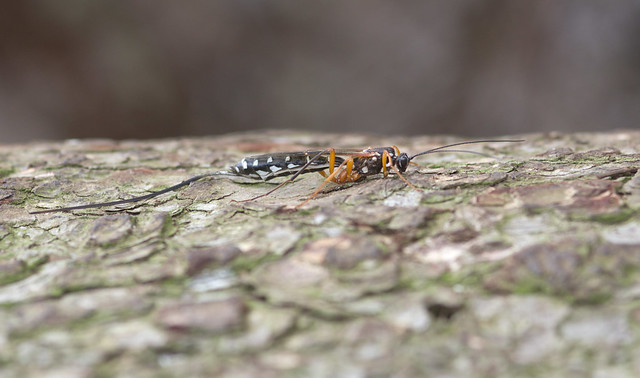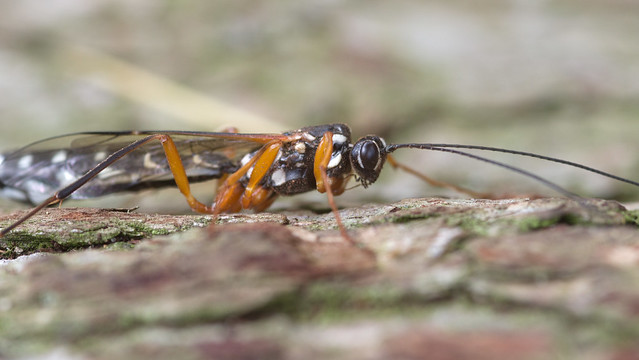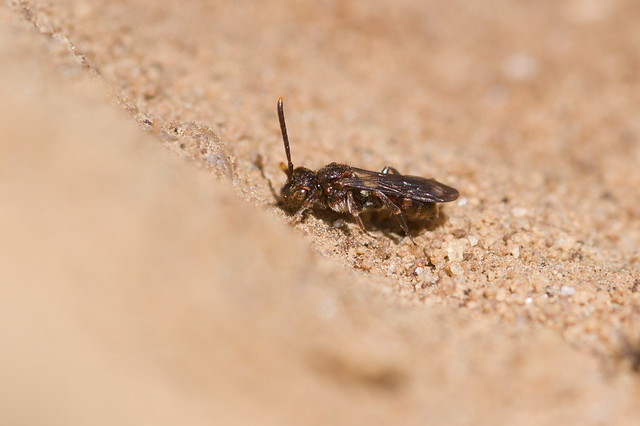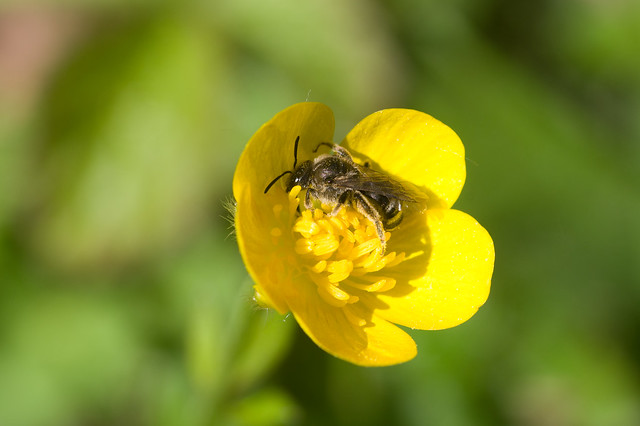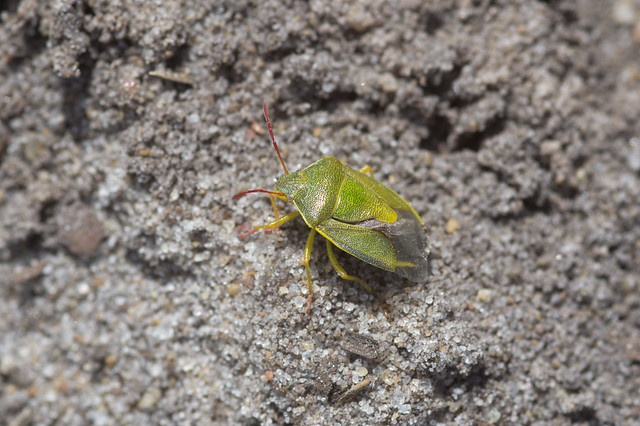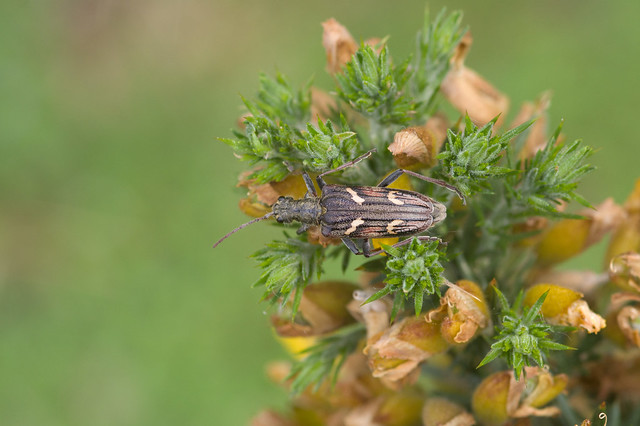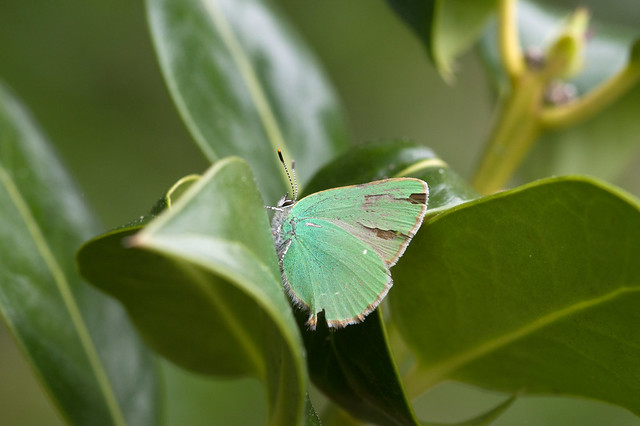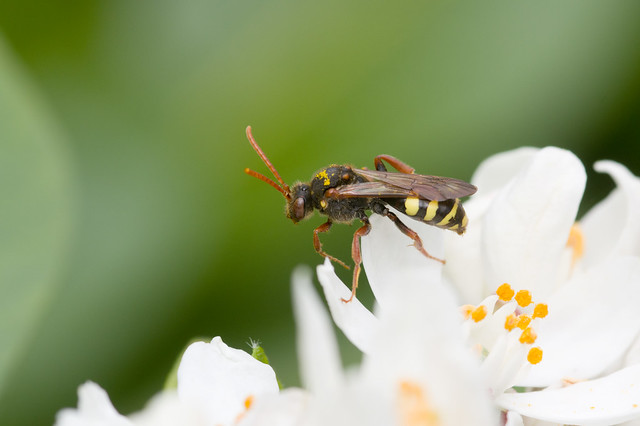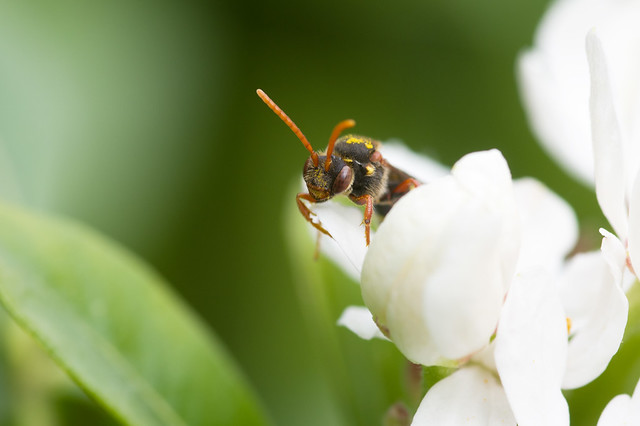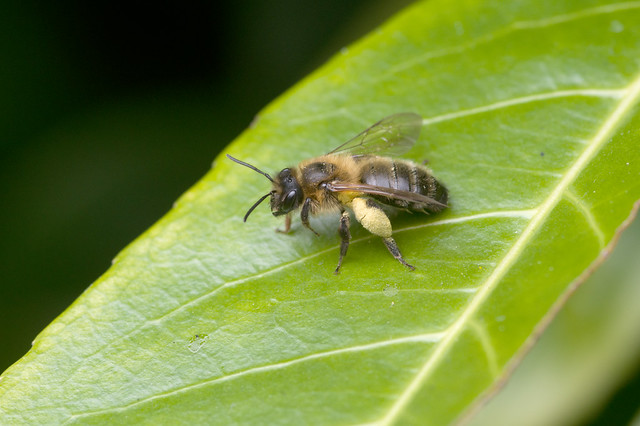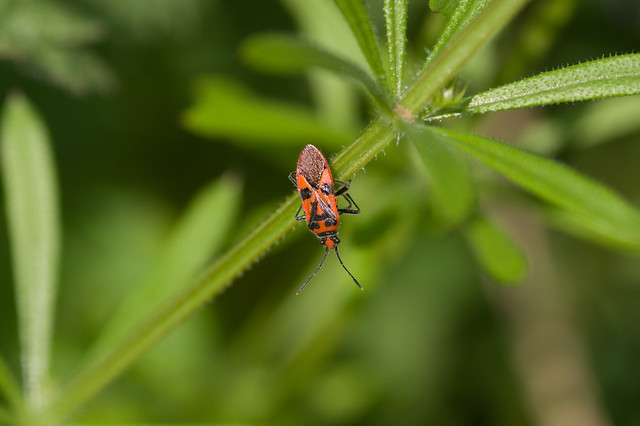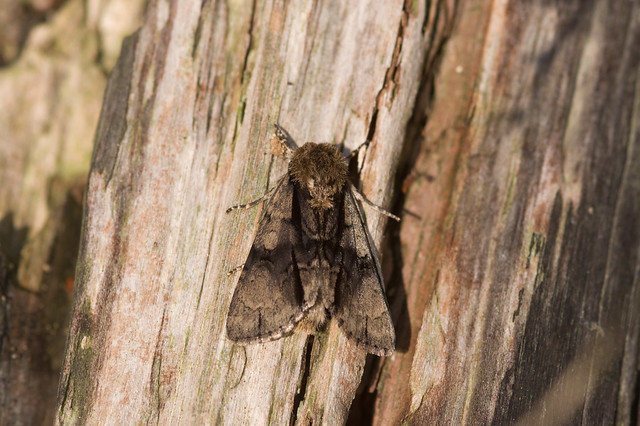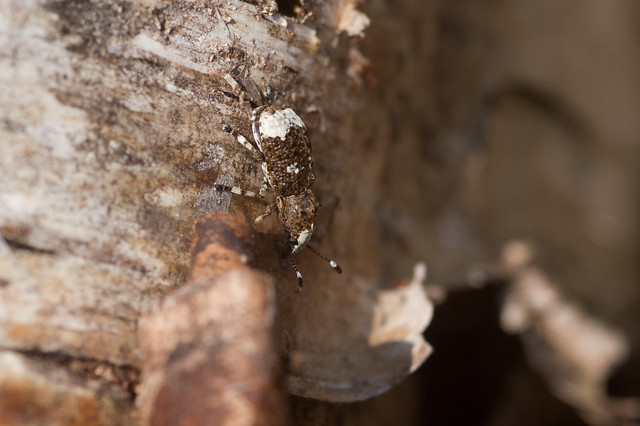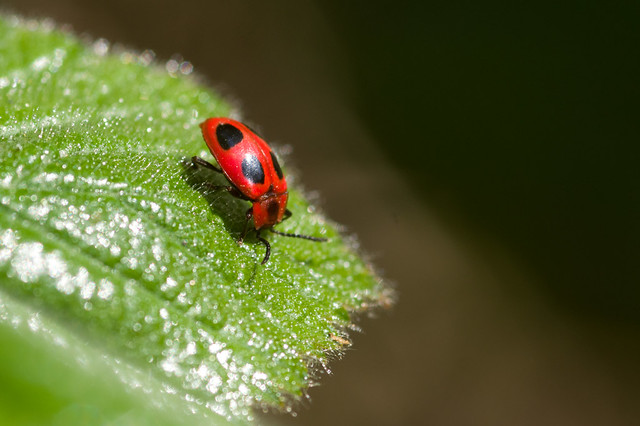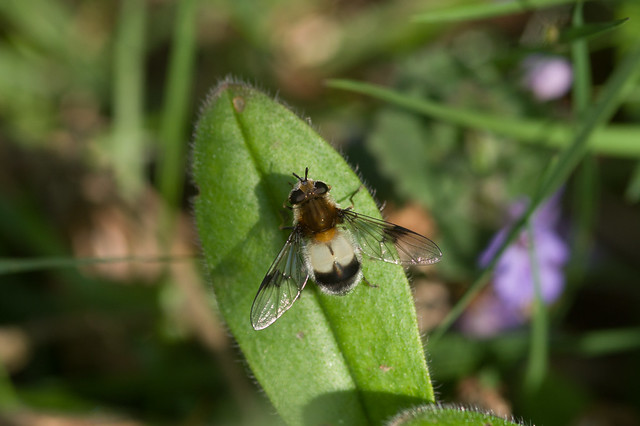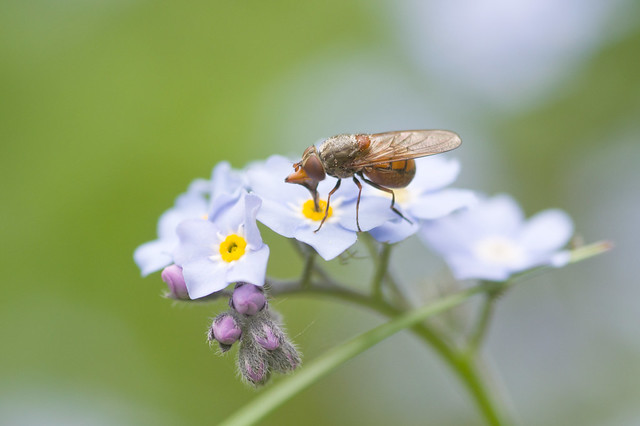Despite not getting out wildlife hunting much over the bank holiday weekend, I ended up having a brilliant string of wildlife sightings, topped off by a monster of a wasp today, but more on that later. The weekend started well, with a trip down the pub for a friend's birthday lunch, and as the little one was starting to get a bit fidgety I nobly volunteered to take her outside for some fresh air. Once outside I ambled over the road to some flowers on the edge of a garden, and was immediately pleased to see a male Hairy-footed Flower-bee zooming around. Better was to come though, as another bee buzzed more sedately into view, showing off a neat black and white pattern. This was the cuckoo of the hairy-foot,
Melecta albifrons, which I've seen before in France, but never in the UK. A few seconds later a second
Melecta appeared, clearly I need to spend more time wandering around pubs.
The next day I'd hoped to nip off to the local woods, but circumstances (the baby) conspired against that happening, and I ended up doing the 'make the baby' sleep route around the village. That turned out to be a very fortuitous turn of events, as while I was wandering past a hedge, idly looking out for bees and hoverflies, a furry ginger bumblebee mimic was basking on a sunlit leaf. I immediately recognised it as a
Criorhina species, but wasn't sure which one, and knew there are a couple of similar looking ginger species. I didn't have my camera on me, so had to settle for some hastily taken phone shots before it flew away. Fortunately they were good enough to identify the fly as
Criorhina floccosa, my second
Criorhina of the year - making good on my
resolutions! Maybe next year I'll resolve to take some decent photos of them, after the previous one was my definition of a
record shot!
 |
| Criorhina floccosa |
After that Monday had a hard act to follow, but the moth trap had a decent stab at it, with a nice range of spring species including Swallow Prominent, Nut-tree Tussock and a very nice Lunar Marbled Brown. There was even a lifer for me on the edge of the trap, not a moth, but the distinctive caddisfly
Glyphotaelius pellucidus, although unfortunately it absconded before I could get a photo. Three days and new ticks for my UK list - going back to work was not what I wanted to do, although I was looking forward to going hoverfly hunting at lunchtime.
That plan lasted all of five minutes when I was passing a large dead log and thought I should check it for basking hoverflies. I didn't see any hoverflies, but I did see an almost unbelievably large ichneumon wasp crawling across the surface. I quickly rattled off a set of photos, and was just pondering what to put in the frame to give a sense of the scale of the beast (it was massive!) when it attempted to fly off. Fortunately the sun had gone behind a cloud, and the wasp was clearly a bit chilly, as it nose dived into the ground. I put my net on top of it, and made a quick phone call to summon Rosie with a large pot. The wasp then spent the afternoon in the office, and became quite a celebrity, with a steady stream of visitors, before we released it later in the day. Given the size of the wasp we were pretty sure it could only be
Rhyssa persuasoria, the Giant Ichneumon, which is the largest species found in the UK, using its 4cm ovipositor to drill into the depths of logs and lay its eggs in the larvae of the almost as impressive Giant Horntail (which I'd also love to see). A quick check with an expert later, and the ID was confirmed, a fourth tick in four days - I wonder what tomorrow might bring?
